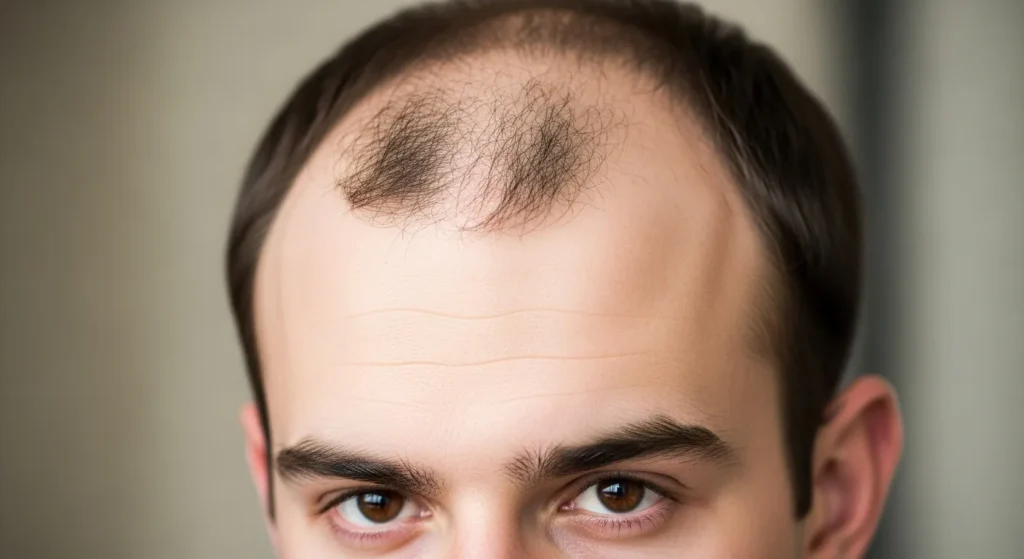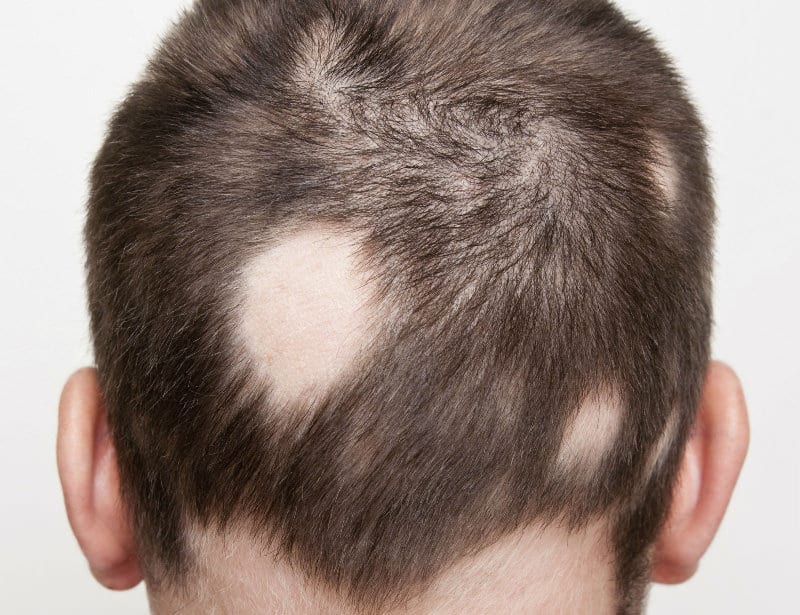Noticing more hair in your brush or on your pillow can raise concerns, but how many hairs does a human lose in a day? On average, shedding 50 to 100 hairs daily is completely normal and part of the body’s natural hair renewal cycle.
This article explains what’s typical, what might signal a problem, and how to keep your hair healthy. With expert-backed insights and practical tips, you’ll learn the difference between normal shedding and hair loss, and what to do if the shedding seems excessive.
Is It Normal to Lose Hair Daily?

Why Hair Shedding Happens
Hair shedding is a natural process. Just like skin renews itself, your scalp sheds old hair to make room for new growth. These strands are usually in the final stage of the hair growth cycle and fall out on their own, not due to damage or disease.
The Hair Growth Cycle Explained
There are three main stages of the hair growth cycle:
- Anagen (Growth Phase): Lasts 2–7 years. About 85–90% of your hair is in this phase.
- Catagen (Transition Phase): Lasts 2–3 weeks. A small number of hairs transition at any time.
- Telogen (Resting/Shedding Phase): This lasts about 3 months. Roughly 10–15% of hairs are in this phase and will soon shed.
Average Daily Hair Loss (Normal Ranges)
Most people lose 50 to 100 hairs a day, and this is completely normal. If you’re noticing more during brushing or washing, it may still be within normal limits, especially if you don’t wash your hair daily.
How Many Hairs Does a Human Lose in a Day?
Scientific Studies and Medical Estimates
Multiple dermatological studies confirm that shedding 50 to 100 hairs per day is standard for healthy individuals. In some cases, up to 150 hairs may be shed daily due to hair length, density, or seasonal factors.
Factors That Influence Daily Hair Loss
Several internal and external factors affect how much hair you shed, including:
- Age – Hair thinning increases with age.
- Gender – Hormonal differences impact hair cycles.
- Season – Shedding often increases during fall and spring.
- Hair washing frequency – Infrequent washing may result in clumps shedding at once.
- Styling habits – Heat tools and tight hairstyles may increase breakage.
- Genetics – A Family history of hair loss can predispose you to higher shedding.
When to Worry: Signs of Excessive Hair Loss
Normal shedding becomes abnormal if:
- You notice visible thinning or bald spots
- Hair comes out in clumps or handfuls
- You see increased hair on your pillow or floor daily
- Shedding continues for more than 2–3 months
In these cases, consult a hair specialist.
Male vs Female Hair Shedding — Is There a Difference?
Hormonal Factors in Women
Women experience shedding due to:
- Menstrual cycle and hormonal shifts
- Pregnancy or postpartum changes
- Thyroid imbalances
- PCOS or menopause
Shedding may spike after childbirth or during perimenopause.
Common Causes of Hair Loss in Men
Men typically face androgenetic alopecia (male-pattern baldness), which starts with thinning at the temples or crown and progresses over time.

What’s Considered Normal for Each?
- Men: 50–100 hairs/day; early balding may begin in 20s–30s.
- Women: 50–150 hairs/day, depending on cycles; postpartum hair shedding is common but usually temporary.
Hair Loss vs Hair Shedding: What’s the Difference?
Temporary Shedding (Telogen Effluvium)
Triggered by stress, illness, surgery, or diet changes, telogen effluvium leads to temporary hair loss 2–3 months after the event. It typically resolves in 6–9 months.
Progressive Hair Loss (Androgenetic Alopecia, etc.)
Unlike shedding, androgenetic alopecia is genetic and permanent unless treated early. It’s characterized by gradual thinning over time and requires medical intervention like minoxidil, finasteride, or hair transplant.
Tips to Reduce Hair Shedding
Daily Hair Care Best Practices
- Use gentle, sulfate-free shampoos.
- Avoid excessive brushing or heat styling.
- Don’t tie your hair too tightly.
Diet and Nutrients for Hair Strength
Ensure your diet includes:
- Protein (eggs, nuts, legumes)
- Iron and zinc
- Vitamins A, D, E, and B-complex
- Biotin and omega-3s
Consider supplements only after consulting a doctor.
When to Use Medications or Seek Help
If shedding persists or worsens:
- Use topical minoxidil for regrowth
- Discuss finasteride (for men)
- Book a medical assessment to rule out deficiencies or hormonal causes
When Should You See a Specialist?
Red Flags That Warrant a Dermatologist Visit
- Sudden, patchy hair loss
- Scalp inflammation or itching
- Hair thinning over the crown or temples
- Shedding lasting more than 3 months
What to Expect During a Hair Consultation
A trichologist or dermatologist may:
- Conduct a pull test or scalp exam
- Order blood tests (thyroid, ferritin, vitamin D)
- Suggest a treatment plan or refer to transplant services
Available Treatment Options in Pakistan
At clinics like Dr. Rana Irfan’s in Islamabad, patients receive:
- Advanced FUE hair transplants
- PRP therapy
- Custom treatment plans for hair loss and scalp health

FAQs About Hair Shedding
Does hair fall increase with age?
Yes. Hair growth slows and hair follicles shrink with age, leading to more noticeable shedding.
Is it normal to lose hair in the shower or on your pillow?
Absolutely. Hair collects in bunches during washing or overnight, but is part of the daily shedding total.
Can stress cause daily hair shedding?
Yes. Physical or emotional stress can trigger telogen effluvium, increasing hair fall temporarily.
Will all lost hair grow back?
Most hairs lost from normal shedding grow back. However, hair loss from genetic conditions may not be treated without treatment.
How many hairs do we grow per day?
Each follicle can grow about 0.3–0.4 mm per day, and we grow new hairs to replace lost ones continuously, up to 100 new hairs daily.
Daily Hair Loss and Your Hair Health
Losing hair each day is natural, but understanding how many hairs a human loses in a day can help you spot early signs of an underlying issue. Normal shedding (up to 100 hairs/day) shouldn’t alarm you. But if you notice more persistent or excessive hair fall, it’s wise to act early.
Concerned about hair fall or unusual shedding patterns?
At Dr. Rana Irfan’s ABHRS-certified clinic in Islamabad, we offer personalized assessments and world-class treatments to restore your confidence.
